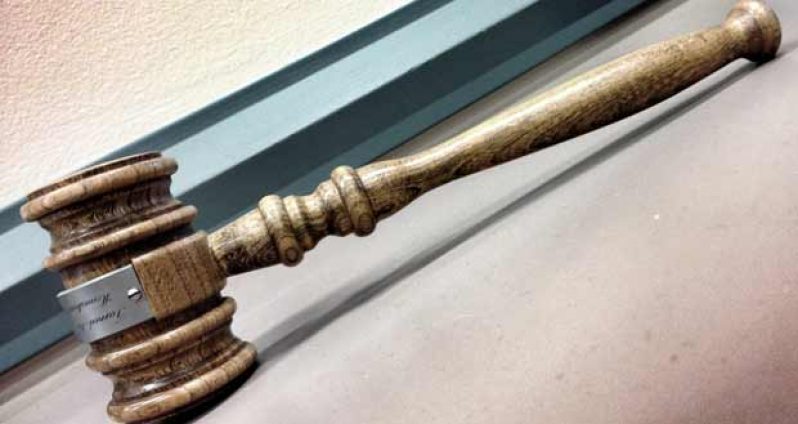IN August 1956, murder accused Lochan of Demerara was convicted and sentenced to death for the murder of Ramcharitar, also called Samaroo.
The convicted man appealed to the Court of Criminal Appeal, which dismissed his appeal and affirmed his conviction and death sentence.
But with the help of the Director of Medical Services, and the Governor, a petition was sent to the Criminal Court of Appeal which included fresh evidence to prove that the man in death row was wrongly convicted, and requested that he be pardoned.
The Court constituted by Chief Justice Frank Holder, Justices Kenneth Stoby and J.A Luckhoo, studied the fresh medical evidence that included X-ray films and evidence of doctors.
Consequent to their conclusion, the said judges allowed the appeal, freed the convict by setting aside the conviction and death sentence.
Before quashing the conviction and death sentence the Criminal Court of Appeal said: “We trust that the comments which we now make will result in the present system being examined and an efficient arrangement devised which will prevent a repetition of any similar occurrence.”
The facts of the case disclosed that in August 1956, the appellant Lochan was convicted of the murder of Ramcharitar. He appealed against conviction and his appeal was dismissed in October 1956.
Under section 22 (a) of the Criminal Appeal Ordinance (Chapter 8) the Governor referred to the Court of Criminal Appeal a petition by the appellant, dated November 27, 1956, alleging that he had been wrongly convicted.
The evidence at the trial was that Ramcharitar died from a fracture of the seventh cervical vertebra which could have been caused by blows on the neck inflicted by the appellant.
No evidence was given at the trial of an X-ray examination of the suspected fracture and on appeal the Court of Criminal Appeal expressed concern that the deceased was not X-rayed before being allowed to leave hospital.
Following on these comments investigation revealed that X-ray pictures had been taken which did not reveal a fracture and the Crown made this evidence available to the appellant.
After hearing fresh evidence relating to the X-ray examination, the Court admitted it on the ground that it was not in any true sense available at the appellant’s trial.
Ramcharitar was admitted to hospital on December 26, and treated for suspected cervical fracture.
On December 28, 1955 the radiologist and the senior surgeon examined the X-ray pictures which did not reveal a cervical fracture.
Ramcharitar left hospital against medical advice on the December 30, 1955, and died on January 5, 1956.
Post mortem examination revealed the cause of death to be a fracture of the seventh cervical vertebra. The senior surgeon expressed the opinion that there was no possibility of a cervical fracture existing and no sign of it appearing on X-ray pictures properly taken.
He could definitely say that a fracture did not exist.
The radiologist agreed that it was possible but highly improbable that a cervical fracture could have existed and not been shown on X-ray pictures.
The pathologist stated that he would not be surprised if told that fracture of cervical vertebra which he had seen in post mortem examination was not revealed on X-ray pictures.
The Court of Criminal Appeal held that: “An opinion is tenable where it is based upon grounds which, even though they are not conclusive, are sufficient and reasonable but might be rejected by a jury, and the Court is not concerned with the correctness of an opinion expressed so long as the grounds on which it is founded are tenable.”
“Had the evidence of the surgeon and the radiologist, together with X-ray pictures been before the jury, they might in all probability have come to a different conclusion from the one to which they had come.”
“As a reasonable jury hearing that evidence and seeing the X-ay pictures and being properly directed might very likely have come to a different verdict. The court would not grant a retrial.”
In its ruling, the Court of Criminal Appeal allowed the appeal and quashed he conviction.
Lawyers Mr. E.V. Luckhoo with Mr. J.O. F. Haynes appeared for the appellant.
Mr. S.S Ramphal, Acting Solicitor General, represented
the respondent.
After delivering the judgment, the Appellate Court said that it is satisfactory to note that as soon as the law officers became aware of the existence of the fresh evidence including the X-ray pictures, they placed it at the disposal of counsel for the appellant and so acted in accordance with the duties and responsibilities of counsel for the Crown.
The Chief Justice who delivered the judgment on behalf of the Court had said: “We feel that we must refer once again to the unfortunate circumstances which rise to this case being referred to us by the Governor.”
“It is a matter of deep concern that arrangements at the Hospital were such that it was possible for evidence of vital importance in a trial involving the most serious crime to have remained unknown and not produced at the trial.”
“Neither the Police nor the Crown nor the defence was aware of its existence. In consequence ,it was not available at the trial and has brought about a very undesirable state of affairs.”
“It is difficult to escape the conclusion that the arrangements for producing medical testimony before the Courts are highly unsatisfactory. There should be no possibility of vital evidence remaining unknown to the police or the Law Officers of the Crown until months after the accused had been convicted.”
“We wish to state that it is unfair to the Judge whose summing up was adequate on the evidence before him, unfair to the law Officers of the Crown, to the Police, to the public and unfair to the accused.”
(By George Barclay)



.jpg)








